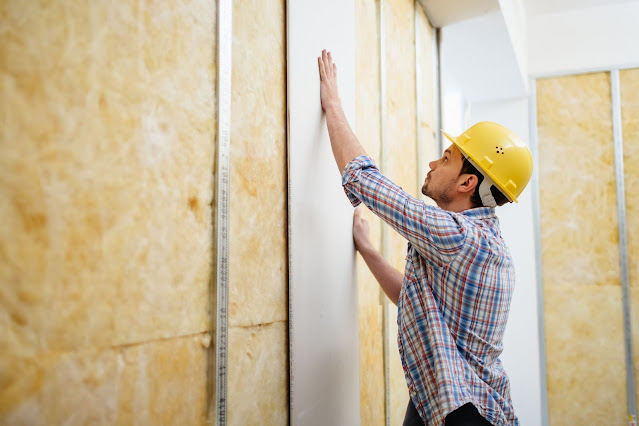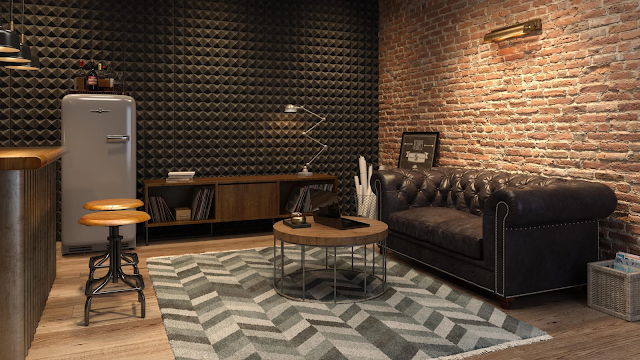Noise Issues in the Bedroom: Causes and Solutions
A bedroom should be a sanctuary for rest and relaxation, but noise disturbances can significantly impact the quality of sleep and overall well-being.
From external street sounds to internal household noise, various factors contribute to unwanted disturbances in a bedroom.
In this article, we will explore the major causes of noise in a bedroom and provide effective solutions to soundproof and create a peaceful sleeping environment.
Common Causes of Noise in the Bedroom
1. External Noise Sources
a. Traffic Noise
Living near busy roads, highways, or intersections can result in constant exposure to vehicle sounds, honking, and engine noise, disrupting sleep.
b. Construction Work
Ongoing construction
projects, whether in the neighborhood or within the same building, generate
high levels of noise that can penetrate bedroom walls and windows.
c. Aircraft and Railway Noise
Homes
located near airports or railway tracks are particularly vulnerable to the loud
sounds of planes taking off and trains passing by, affecting sleep patterns.
d. Loud Neighbors and Street Noise
Urban living design often comes with noisy neighbours,
loud music, parties, and general street noise that enters through windows and
walls.
a. Household Appliances
Refrigerators,
washing machines, air conditioners, and false ceiling fans can produce
continuous background noise that might be disruptive, especially at night.
b. Plumbing and Water Flow
Noisy
pipes, flushing toilets, and running water from neighbouring bathrooms can
create unexpected disturbances.
Hard
flooring materials, such as kitchen wall tiles and wood, amplify the sound of
footsteps and moving furniture, making upstairs noise a common issue.
d. Thin Walls and Poor Insulation
Rooms
with thin walls and poor insulation allow sound to travel easily between rooms,
leading to disturbances from conversations, televisions, and music.
e. Electronic Devices
Ringing
phones, television sounds, and electronic gadgets contribute to noise pollution
within the bedroom environment.
Solutions for Soundproofing the Bedroom
1. Soundproofing Walls
a. Add Acoustic Panels
Installing
acoustic wall panels helps absorb sound waves and reduce echo, making the room
quieter.
b. Use Soundproofing Paint
Specialized
soundproof paint contains materials that help dampen sound vibrations and
minimize noise penetration through walls.
c. Install Soundproof Drywall
Double-layered
drywall with noise-reducing insulation, such as green glue, can significantly
block sound transmission.
d. Add Bookshelves or Wall Hangings
Filling
walls with bookshelves, artwork, or fabric wall hangings adds mass, which helps
in absorbing sound and reducing noise transfer.
2. Soundproofing Windows
a. Use Heavy Drapes or Soundproof Curtains
Thick,
layered curtains made of dense materials help in absorbing external noise,
especially traffic and street sounds.
b. Install Double or Triple-Glazed Windows
Replacing
single-pane windows with double or triple-glazed glass improves insulation and
significantly reduces outside noise.
c. Apply Weather Stripping and Window Seals
Gaps
around windows allow sound to enter easily. Applying weather stripping and
acoustic caulking helps seal those gaps effectively.
3. Soundproofing Floors
a. Use Rugs and Carpets
Soft
floor coverings, such as area rugs and carpets, absorb impact noise and reduce
sound reflection within the room.
b. Install Soundproof Underlay
Underlay
materials, such as cork or rubber padding, beneath flooring materials help
minimize noise transmission from footsteps.
c. Opt for Cork or Vinyl Flooring
Compared
to hardwood or tile, cork and vinyl flooring are better at absorbing sound and
reducing noise impact.
4. Soundproofing Doors
a. Install a Solid Core Door
Replacing
hollow-core doors with solid-core doors helps block sound more effectively.
b. Use Door Sweeps and Seals
Installing
door sweeps and weather stripping at the bottom and edges of the door prevents
noise from leaking through gaps.
c. Hang Soundproof Curtains or Blankets
Placing
soundproof curtains or thick blankets over doors helps dampen noise from
outside the room.
5. Soundproofing Ceilings
a. Install Acoustic Ceiling Panels
Acoustic false
ceiling panels or foam tiles reduce airborne and impact noise from the upper
floors.
b. Use a Suspended Ceiling System
A false
ceiling with soundproofing insulation can help absorb noise from above.
c. Apply Mass Loaded Vinyl (MLV)
MLV
sheets provide additional insulation against airborne noise and reduce sound
reverberation.
6. Additional Noise Reduction Strategies
a. White Noise Machines
White
noise machines generate soothing background sounds that help mask disruptive
noises and promote better sleep.
b. Soundproofing Foam
Foam
panels, placed strategically around the room, absorb noise and improve acoustic
comfort.
c. Smart Furniture Placement
Positioning large living room
furniture pieces,
such as wardrobes and bookshelves, against noisy walls helps in blocking sound
transmission.
d. Planting Greenery
Indoor plants with dense foliage, such as
rubber plants and ferns, can help absorb sound and create a more peaceful
ambiance.
Conclusion
Noise
disturbances in a bedroom can significantly impact sleep quality and overall
well-being. To address these issues effectively, it’s essential to consider
professional help. You can hire the best interior designer to transform your space and
create a peaceful, noise-free environment conducive to restful sleep.
Understanding
the root causes of noise—whether external or internal—allows homeowners to take
appropriate measures for soundproofing. Implementing solutions such as
upgrading windows, adding acoustic panels, using thick carpets, and sealing
gaps in doors and windows can significantly reduce noise pollution.
By making
the right soundproofing choices, anyone can transform their bedroom into a
serene, quiet retreat that promotes relaxation and restful sleep.
































Comments
Post a Comment